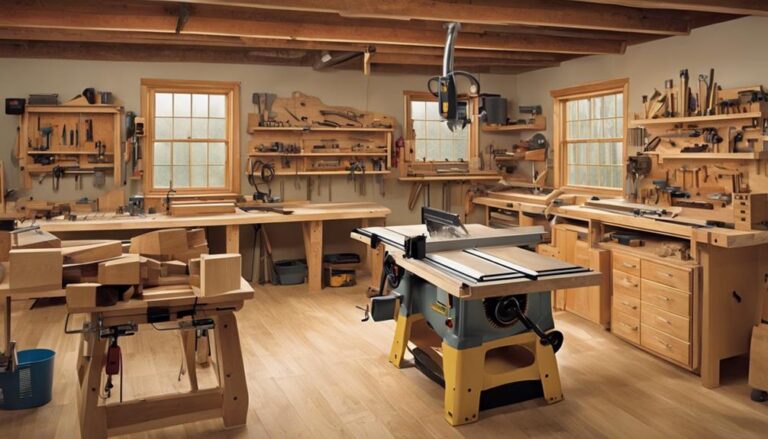When it’s time to part ways with that well-loved couch or desk, you’re faced with a choice that’s not just about picking furniture but deciding on the character and longevity of your space.
If you’re leaning towards natural wood, you’ve got two paths: the enduring hardness of oak and cherry or the softer, more malleable nature of pine and redwood. Your decision hinges not just on aesthetics but on practical aspects like durability, maintenance, and cost.
However, there’s more beneath the surface of this choice, including aspects that could sway your decision in ways you might not expect. Let’s explore what sets these two options apart and why it matter for your next furniture acquisition.
Contents
Understanding Hardwood and Softwood
When choosing between hardwood and softwood for your furniture, it’s crucial to understand that hardwoods, hailing from angiosperm trees with broad leaves, offer denser and stronger timber compared to softwoods, which come from gymnosperm trees with needle-like leaves.
The differences between these two types of wood stem from their botanical origins. Hardwoods grow slower, resulting in a robust structure ideal for enduring furniture. On the other hand, softwoods are more affordable and easier to manipulate, making them versatile for various projects.
Within these categories, types of hardwood like oak, walnut, and maple, and types of softwood such as cedar, fir, pine, and spruce, each bring unique properties and aesthetics to the crafting table, influencing your project’s outcome significantly.
Durability and Longevity
Understanding the differences between hardwood and softwood sets the stage for appreciating why hardwood furniture is renowned for its exceptional durability and longevity.
Here’s why hardwood stands out:
- Dense Nature: Hardwoods like oak and maple boast a dense constitution, enhancing their longevity and resilience against daily wear and tear. This density ensures your furniture remains a steadfast part of your decor for years.
- Resistance to Damage: Unlike softwood counterparts, hardwood pieces are far less prone to dents, scratches, and other forms of damage, maintaining their pristine appearance with minimal effort.
- Maintenance: With regular care, hardwood furniture’s beauty and structural integrity are preserved, ensuring it can be passed down through generations.
- Investment Value: Opting for hardwood furniture means investing in pieces that withstand rigorous use and remain visually appealing over time, offering unmatched durability and longevity.
Aesthetic and Style Considerations
Beyond durability, the choice between hardwood and softwood influences the aesthetic and stylistic essence of your furniture, shaping the ambiance of your space. Hardwoods like oak, walnut, and mahogany offer a classic and timeless aesthetic, while softwoods such as cedar and pine provide a rustic and natural look.
| Hardwoods | Softwoods |
|---|---|
| Oak, walnut, mahogany – Timeless elegance | Cedar, pine – Rustic charm |
| Maple, cherry – Sophistication with intricate grain patterns | Spruce, redwood – Cozy warmth |
Each wood species brings its unique texture and color to the table, allowing for diverse style options in furniture design. Whether you’re aiming for sophistication with the elegant grains of maple and cherry or seeking the cozy warmth of spruce and redwood, your furniture can significantly impact the overall look and feel of your space.
Cost and Budget Impact
While aesthetics play a crucial role in selecting the ideal wood for your furniture, it’s equally important to consider how your choice affects the overall cost and fits within your budget.
- Softwoods like pine are generally more affordable for furniture projects compared to hardwoods like oak, making them budget-friendly options.
- Pine furniture can cost around $200-$500, significantly less than oak furniture, which may range from $800-$2000.
- Choosing softwood furniture can help save costs while still achieving a stylish and functional living space.
- Consider the cost and budget impact when deciding between hardwood and softwood furniture for your home to avoid overspending.
Environmental and Sustainability Factors
How does your choice between hardwood and softwood impact the planet’s health and the sustainability of furniture production? Softwoods, growing faster than hardwoods, present a sustainable option for quick harvesting. Sustainable forestry practices and FSC certification ensure softwoods are responsibly managed, bolstering environmental sustainability in furniture manufacturing.
| Feature | Softwoods | Impact on Sustainability |
|---|---|---|
| Growth Rate | Fast | More sustainable, quick replenishment |
| Forestry Practices | Sustainable, FSC certified | Preserves ecosystems, ensures longevity |
| Recycling & Repurposing | Highly feasible | Reduces waste, supports eco-friendly use |
| Source | Locally sourced preferred | Lowers carbon footprint, promotes eco-practices |
Choosing softwoods, especially when locally sourced, minimizes transportation emissions, furthering eco-friendly practices in furniture making.
Conclusion
In conclusion, your furniture choice between hardwood and softwood hinges on balancing durability, aesthetics, and cost. Hardwoods offer a robust, enduring option, enriching spaces with their intricate grains and warmth, ideal for heirloom-quality pieces.
Softwoods, while more budget-friendly and lighter, provide versatility and ease of customization. Consider environmental sustainability in your selection, opting for responsibly sourced materials.
Ultimately, selecting the right wood type elevates your space, marrying functionality with artistic expression, tailored to your specific needs and personal style.






